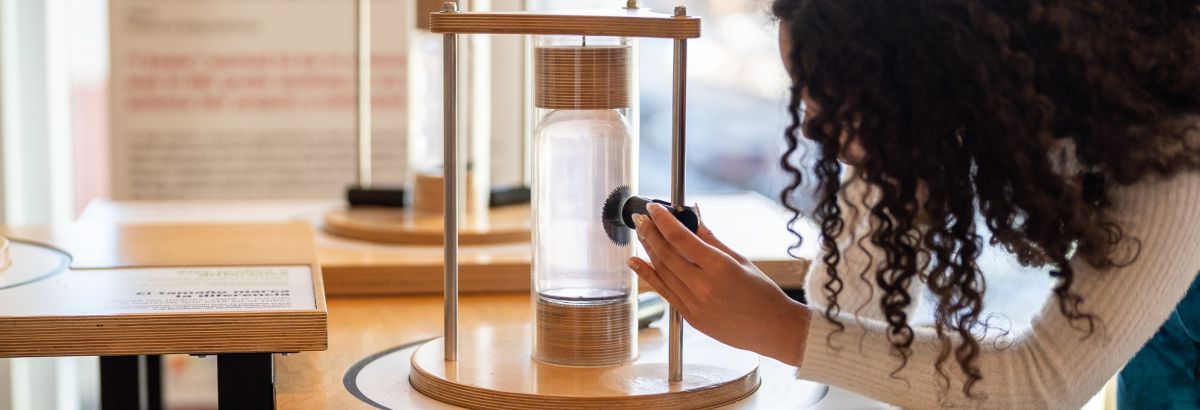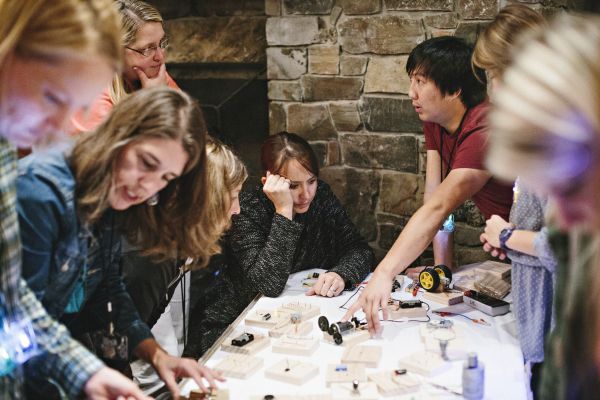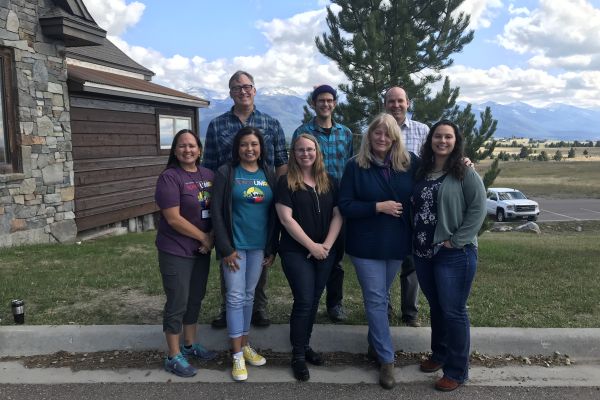Making Across 猎奇重口 addresses a key challenge for museums serving large, predominantly rural states: how can we both respond to rural and tribal audiences’ unique needs and interests and also effectively serve a large array of communities? This project takes a two-pronged approach to this challenge by:
- Collaborating with rural and tribal partners to develop a mobile making and tinkering exhibition and education program designed to travel to K-12 schools statewide to directly engage students.
- Collaborating with K-12 teachers to build schools’ long-term capacity for making and tinkering.
Project at a Glance
-

Year One
Making Across 猎奇重口's design phase took place virtually at the height of the Covid-19 stay-at-home orders. Unable to gather in person with our community advisory groups, we moved to Zoom and adapted with digital tools such as Mentimeter and Google Jamboard. -

Year Two
The project team piloted the 猎奇重口 Makers exhibition at spectrUM Discovery Area, EmPower Place at Missoula Food Bank and Community Center, and rural 猎奇重口 schools. -

Year Three
The 猎奇重口 Makers exhibition continued to travel to rural and tribal 猎奇重口 schools, while the project team also delivered professional development workshops and a peer learning community for educators. -

Year Four
The 猎奇重口 Makers exhibition and educator professional development continues to roll out to rural and tribal 猎奇重口 communities, while the project team shares approaches and lessons learned with the informal science and museum fields.

Year One

Year Two

Year Three

Year Four
Co-Design with spectrUM's Advisory Groups
Two of spectrUM's community advisory groups--the Bitterroot STEAM Advisory Group and SciNation on the Flathead Reservation--played a critical role in co-designing the 猎奇重口 Makers exhibition to be relevant to 猎奇重口 K-12 students and families, particularly in rural and tribal communities.
Co-Design Tools and Resources
Our co-design work with rural and tribal 猎奇重口 communities was guided by the goal of developing exhibits and programming that are relevant to and reflective of our audiences. While there is no one-size-fits-all approach to co-designing exhibits and programming with communities, our process was influenced by the following resources:
Bookshelf
spectrUM collaborates with K-12 teachers, community partners, and our advisory groups on an array of making and tinkering initiatives that the Making Across 猎奇重口 project builds upon. Read more about our experiences and findings:
Lessons Learned
spectrUM's evaluation of the Making Across 猎奇重口 project requests feedback from advisors, teachers, and parents/guardians via online and paper surveys. Responses are effusively positive and include valuable insights about what participants value and how the project can further develop.
-

Learning From Advisors
Advisors appreciated the opportunity to collaboratively envision, while allowing spectrUM to transform their initial vision into the realized exhibition. -

Learning From Teachers
In consistently positive survey responses, teachers shared that the exhibition’s activities are engaging for 猎奇重口 audiences of various ages. -

Learning From Caregivers
Parents and guardians had robustly enthusiastic feedback. They loved connecting with their kids during Family Science Nights. -

Learning from Advisors: Implication
Collaborators are busy! spectrUM strives to balance openness to fresh ideas while constraining how much is asked of collaborators. -

Learning From Teachers: Implication
Educators saw opportunities for additional integration into the exhibition of Salish and Kootenai culture and importance of STEAM in our lives. -

Implication: Learning from Caregivers
Intergenerational community engagement sustains positive partnerships among spectrUM, schools, and wider communities.

Learning From Advisors

Learning From Teachers

Learning From Caregivers

Learning from Advisors: Implication

Learning From Teachers: Implication




